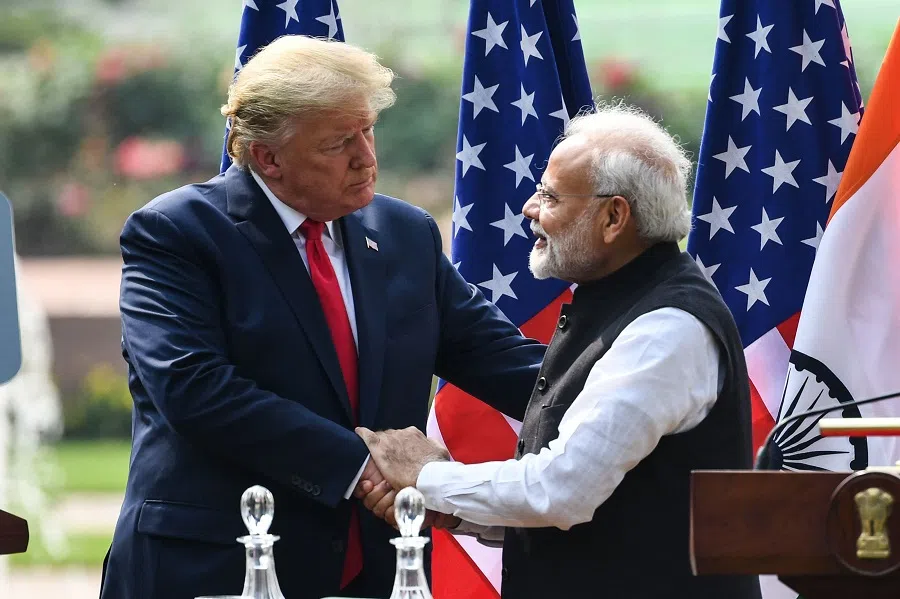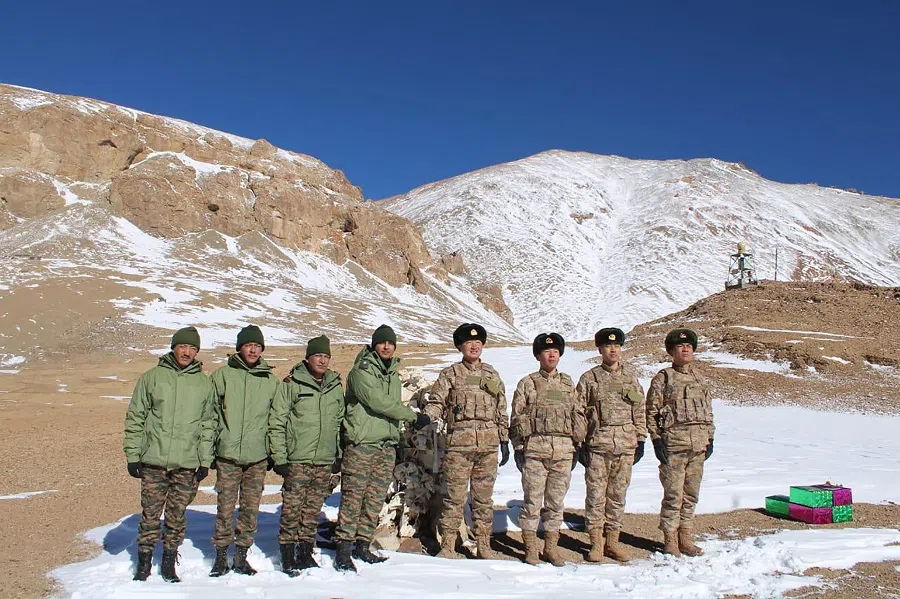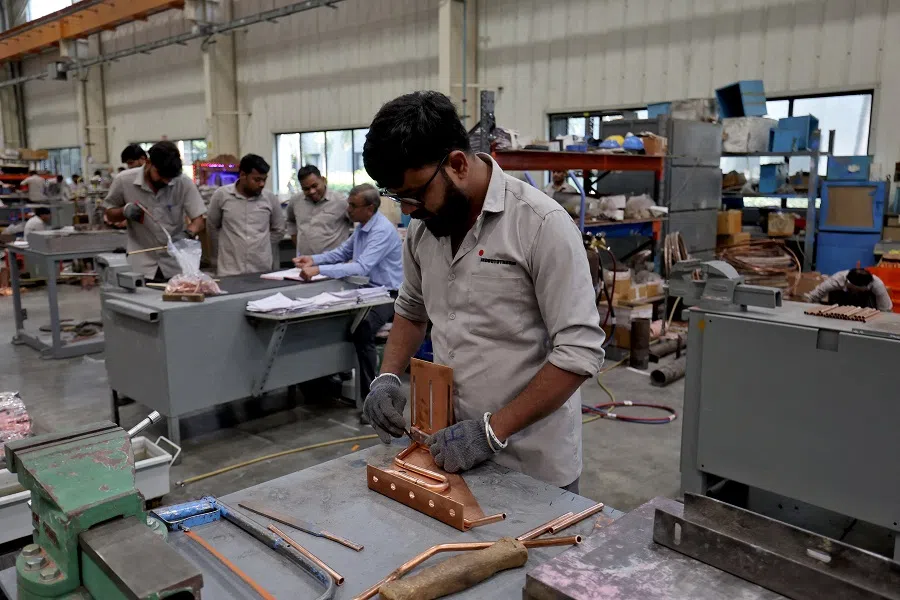Trump 2.0: India’s gain, China’s concern?
While the friendly relationship that India and the US enjoyed during Trump’s first term is likely to continue, China will be a consideration for both countries in the next four years. Academic Rishi Gupta examines the issue.

Donald Trump’s return to the US presidency signals a major American “reset” with deep implications for global politics, the economy and international order. Analysts globally foresee significant shifts in US foreign policy, as Trump’s transactional diplomacy could undermine multilateralism. US contributions across various sectors, including aid to Israel and Ukraine, will face intense scrutiny, while unpredictability is expected to remain a hallmark of Trump’s foreign policy approach.
The fraying US-China relationship
The inward-looking “America First” policy under Trump also means that the trade and tariffs war with China will continue. Xi’s congratulations message indicated a willingness to “strengthen communication, expand cooperation, and resolve differences with the US based on the principles of mutual respect, peaceful coexistence, and win-win to promote the development of China-US economic and trade relations toward a stable, healthy, and sustainable direction, benefiting both countries and the world at large”.
However, the nomination of Marco Rubio as secretary of state, known for his strong stance on China, signals a potential hardline approach to the Trump administration’s foreign policy. This move likely reflects an alignment of economic protectionism with strategic competition.
Policymakers and observers in Delhi largely view Trump as injecting fresh momentum into US-India relations, signalling optimism for further cooperation.
Despite these odds, China might successfully court business leaders close to Trump, including Elon Musk, who has benefited immensely from China’s relaxed policies in making Tesla a global brand. While the trade and tariffs war requires no guesswork, Trump may certainly be telling China that its access to the American economy and resources will undergo significant changes.
Meanwhile, looking back, Trump was categorical in criticising China over the spread of Covid-19, raising questions about whether his renewed presidency might reignite such narratives to further isolate Beijing on the global stage or seek more engagement.
India confident of working with Trump
While prominent world leaders have been quick in reassessing their approach towards a Trump presidency and congratulated him with hopes for opportunities for new engagements, India seems uniquely comfortable in dealing with Trump. Why? There is no doubt that India, in the last decades, has emerged as a close partner of the US, and this has worked in Delhi’s favour.
In a recent interview, Indian Foreign Minister S. Jaishankar said that many countries are nervous about a Trump-led America, but “India was not one of them”, indicating the comfort India enjoyed under the previous Trump presidency will remain intact.
In fact, the US-India Comprehensive Global and Strategic Partnership has flourished under both Republican and Democratic administrations, and there is every expectation that it will continue to grow. Policymakers and observers in Delhi largely view Trump as injecting fresh momentum into US-India relations, signalling optimism for further cooperation.

Indian Prime Minister Narendra Modi joined the early race to congratulate his “friend” Donald Trump on his historic election victory, showing an India that is more prepared for a Trump presidency. Modi tweeted, “As you build on the successes of your previous term, I look forward to renewing our collaboration further to strengthen the India-US Comprehensive Global and Strategic Partnership. Together, let’s work for our people’s betterment and promote global peace, stability and prosperity.”
Modi was also among the first few leaders to have spoken to Trump after a grand victory of the Republicans in the high-voltage elections. What helps India exhibit a confident posture is the personal rapport between Modi and Trump.
During his election campaign, Trump acknowledged Modi’s leadership on multiple occasions and expressed admiration of his position on multiple issues, including dealing with a terror-financing neighbour Pakistan. What will further benefit India is Delhi’s familiarity with critical advisers in the Trump administration, with whom India already had a working relationship during his first term in office. India already seems to admire Trump’s anti-globalisation stand, which has benefited China in theory and practice, mainly in accessing global markets like the US, Europe and Asia.
Trump’s “America First” and Modi’s “India First” approaches share a common inclination towards building self-sustaining and self-reliant capacities to decouple their dependencies from China, potentially accelerating industrialisation efforts.
However, the global economies that could counter China, including the US and India, have, in the last decade, raised concerns and made serious progress on trade regulations, tariffs and bilateral deficits. Trump’s “America First” and Modi’s “India First” approaches share a common inclination towards building self-sustaining and self-reliant capacities to decouple their dependencies from China, potentially accelerating industrialisation efforts.
China’s unease over deepening US-India ties
The US has very quickly come to an understanding about India that Delhi can be a reliable partner, especially in counter-balancing China. Delhi can also be trusted to sustain and protect US interests in Asia and bring the strategic Pacific Ocean closer to the Indian Ocean. The growing US-India partnership has undeniably heightened Beijing’s strategic concerns, signalling a significant recalibration in India’s foreign policy post-Galwan Valley crisis.
During the recent visit of an Indian delegation of think tankers, researchers, and academics (including myself) to Beijing at the invitation of the Chinese Ministry of Foreign Affairs — the first such engagement since the June 2020 clashes at the Line of Actual Control (LAC) — Chinese officials and experts expressed visible unease over the deepening US-India ties. They perceived this partnership as a deliberate manoeuvre aimed at counter-balancing China’s influence in the Indo-Pacific and beyond.

However, for India, the violent face-off at Galwan was a defining moment for reassessing its foreign policy priorities. The incident underscored the limitations of bilateral engagements with China and highlighted the need for India to diversify its strategic partnerships. Consequently, India intensified its engagement with the US and other like-minded democracies, such as those within the Quad framework, while simultaneously seeking to strengthen its self-reliance in critical sectors through initiatives like Aatmanirbhar Bharat or “Self-Reliant India”.
Beijing’s annoyance at the US over the White House’s bilateral cooperation with India has seeped into the Chinese state media, with the accusation that “the US has intensified its efforts to court India while applying pressure on China”.
By positioning itself as a trusted alternative, India aims to integrate deeper into global value chains, supported by initiatives like iCET and the Resilient Supply Chain Initiative.
US exploiting India?
A Chinese state media report, hinting at the like-minded Quad alliance, said: “China has maintained its position without wavering, remaining undeterred by the ‘strengthening US-India cooperation’. India has also observed that as US-India defence ties deepen, both countries claim to share ‘values’...”
However, China warns that “in reality, the US only wants to use India to exhaust China while being unwilling to provide India with guarantees. On the contrary, it may push India to the front line of confronting China.” In Delhi’s view, this partnership with the US has successfully counter-balanced China and will continue to progress under the next Trump presidency.
Beyond bilateral cooperation under the comprehensive partnership and minilateral groupings like the Quad, the US and India align on the “China+1 strategy” to minimise their dependencies on Chinese supply chains. While the Biden administration conveys this approach cryptically, India has undoubtedly decided to say it out loud.
The 2023-24 Economic Survey of India provided a framework advocating the “China+1 strategy” as a critical driver for attracting investment, leveraging its Production Linked Incentive (PLI) schemes to boost manufacturing in electronics, pharmaceuticals, and automotive sectors.

By positioning itself as a trusted alternative, India aims to integrate deeper into global value chains, supported by initiatives like iCET and the Resilient Supply Chain Initiative. This shared vision underscores a strategic pivot toward supply chain resilience and economic de-risking. Under the Trump administration, his anti-globalisation stance and America First strategy will match what India presents as the India First and Make in India initiative.
Challenges loom for India
While the likelihood of continuing the US policies under the Trump administration may offer opportunities for India, such as further deepening collaboration with US technology giants and accelerating private sector growth, India may struggle to keep pace with the US’s deregulated technology-driven capitalist approach, risking a strategic lag.
India has traditionally viewed the Quad as a platform for fostering economic, technological, and infrastructural cooperation rather than a military alliance, and it would want to keep it that way...
Moreover, if Trump takes a more strategic view of the Quad, emphasising a stronger security dimension, it could create discomfort for India and other Quad members, given their cautious approach to military entanglements that may warrant tensions in the Indo-Pacific region vis-à-vis China.
India has traditionally viewed the Quad as a platform for fostering economic, technological, and infrastructural cooperation rather than a military alliance, and it would want to keep it that way, especially after tensions with China have been resolved bilaterally with Beijing.
A shift towards a security-focused agenda under Trump might complicate consensus within the Quad, particularly as members like India, Japan, and Australia weigh their relationships with China. Balancing economic collaboration and strategic autonomy will be crucial for India in navigating Trump’s second term.





